|
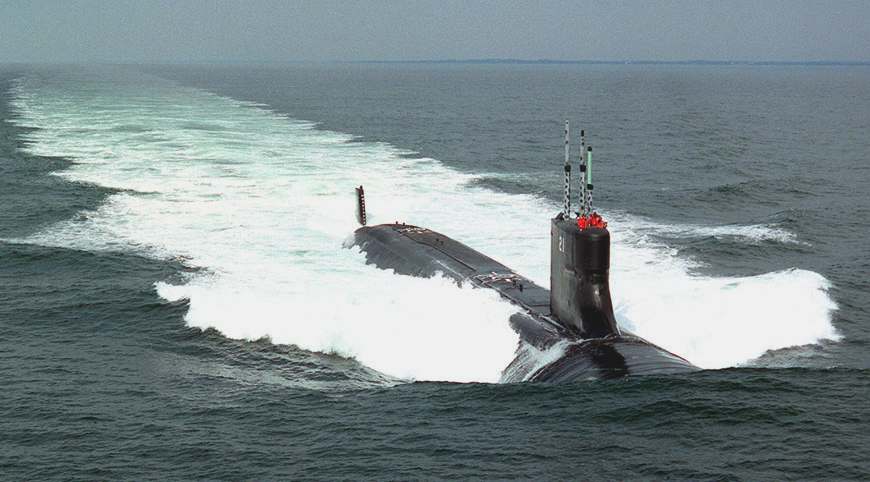
The Seawolf-class is a class of nuclear-powered fast attack submarines (SSN) in service with the United States Navy. The class was the intended successor to the Los Angeles class. Design work began in 1983. At one time, an intended fleet of 29
submarines was to be built over a ten-year period, later reduced to twelve submarines. The end of the Cold War and
budget constraints led to the cancellation in 1995 of any further additions to the fleet, leaving the Seawolf class limited to just three boats. This, in turn, led to the design of the smaller Virginia class.
MOST ADVANCED
(EXPENSIVE)
The boats of the Seawolf class are the most advanced but also the most expensive hunter-killer submarines in the world. This was the first completely new American submarine design for some 30 years, the USS Seawolf was laid down in 1989 as the lead boat in a class of 12.
The Seawolf design was intended to combat the threat of large numbers of advanced Soviet ballistic missile submarines such as the Typhoon class and attack submarines such as the Akula class in a deep ocean environment. Seawolf class hulls are constructed from HY-100 steel, which is stronger than the HY-80 steel employed in previous classes, in order to withstand water pressure at greater depths.
The exact diving depth of this class of boats is classified; most reputable sources vary from 1,600–2,000 feet as a likely test depth, and from 2,400–3,200 feet for collapse depth. These figures are consistent with their original design parameters and not unlikely.
Compared to previous Los Angeles class submarines, Seawolf submarines are larger, faster, and significantly quieter; they also carry more weapons and have twice as many torpedo tubes, for a total of
8 with multi target capability. The boats are able to carry up to 50 UGM-109 Tomahawk
cruise missiles for attacking land and sea surface targets. As in all nuclear submarines, the load out of equipment, weapons and crew affects available excess buoyancy and thus operational parameters. The boats also have extensive equipment to allow for littoral, or shallow water, operations. The class uses the more advanced ARCI Modified AN/BSY-2 combat system, which includes a new, larger spherical sonar array, a wide aperture array (WAA), and a new towed-array sonar.
Each boat is powered by a single S6W nuclear reactor, delivering 45,000 hp to a low-noise
pump-jet via two turbines rated at 52,000hp (38.8MW), a pumpjet propulsor, a single shaft, and one secondary propulsion submerged motor.
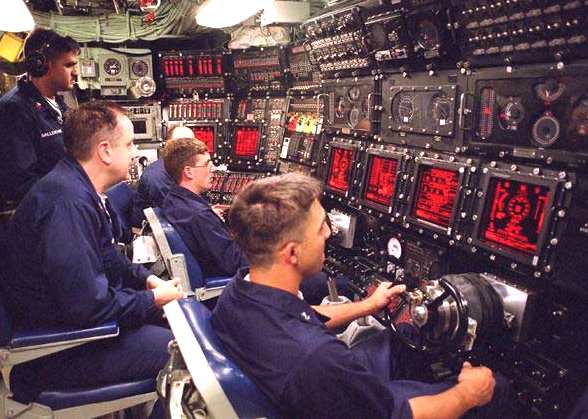
VARIATION
The third and last submarine, the USS Jimmy Carter is roughly 100 feet (30 m) longer than the other two boats of her class due to the insertion of a section known as the Multi-Mission Platform (MMP), which allows launch and recovery of ROVs and Navy SEAL forces. The MMP may also be used as an underwater splicing chamber for tapping of undersea fiber optic cables. This role was formerly filled by the decommissioned USS Parche (SSN-683). Jimmy Carter was modified for this role by Electric Boat at the cost of $887 million.
The USS Jimmy Carter, which was commissioned in December 2001, incorporates a dry deck
shelter. The dry deck hangar is an air transportable device than can be fitted piggy-back style to carry swimmer delivery vehicles and combat swimmers. There is a combat swimmer silo too, an internal lock-out chamber that can fit up to eight swimmers and their equipment. The irony of such a submarine being named after the president who bungled the Iran hostage rescue mission is not lost on older US Navy
personnel.
The alterations to the design included modifications to the ballast control, mission management spaces and the creation of a flexible ocean interface known as a 'wasp waist', which will enable the deployment and recovery of payloads without the use of torpedo tubes. Other additions include a new high-capacity communications mast and ROV handling system. The Jimmy Carter was launched in June 2004 and commissioned in February 2005.
SERVING
* USS Seawolf (SSN-21) – commissioned and in service
* USS Connecticut (SSN-22) – commissioned and in service
* USS Jimmy Carter (SSN-23) – commissioned and in service
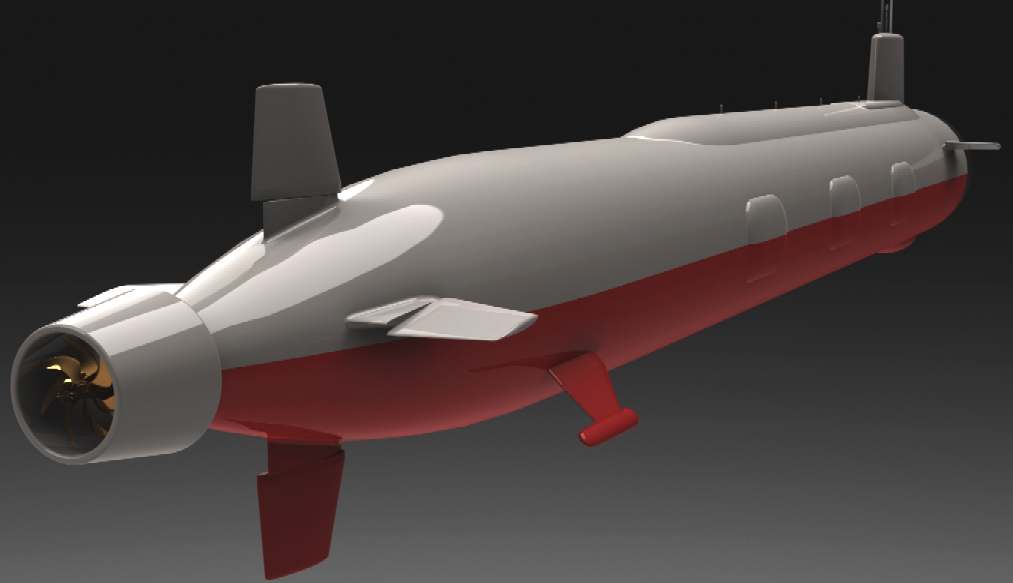
The cost of the Seawolf class in 1991 was estimated at $33.6 billion (25 per cent of the naval construction budget), making it the most expensive naval building programme every. At that time the US Navy planned an additional 17 boats. Then the peace dividend resulting from the collapse of the USSR and the end of the Cold War caused US politicians to question the need for more ultra-quiet boats, and the class was capped at three units and the replacement for the 51 current Los Angeles class boats became a much cheaper design of the Virginia class.
The Seawolf class was intended to restore the technological edge which the US Navy had enjoyed over the Soviets from 1945 until the mid-1980s, when espionage and the cynical trading practices of some US allies somewhat eroded it. The class is completed by its second unit, the USS
Connecticut.
SILENCE
IS GOLDEN
The most important advantage of the Seawolf class design is its exceptional quietness even at high tactical speeds. Whereas most submarines need to keep their speed down to as little as 5 kts to avoid detection by passive sonar arrays, the Seawolf class are credited with being able to cruise at 20 kts and still be
very difficult to
locate.
The US Navy describes the Seawolf as 10 times as quiet as an improved Los Angeles and 70 times as quiet as the original Los Angeles boat: a Seawolf at 25 kts makes less noise than a Los Angeles tied up alongside the pier! However, during their construction and subsequent trials, several problems were experienced on the Seawolf after acoustic panels kept falling off the boat.
Now that their originally intended targets are rusting at anchor in Murmansk and Vladivostok, it is the Seawolf's ability to make a stealthy approach to enemy coasts that makes it so valuable.
The Seawolf's propulsion system makes it ten times
quieter over its full range of operating speeds than the Improved-688 class and 70 times more quiet than the initial generation of Los Angeles 688-class submarines. The Seawolf's quieter propulsion system will also enable it to have twice the tactical speed as the I-688.
Tactical speed is the speed at which a submarine is still quiet enough to remain undetected while tracking enemy submarines effectively. Overall, the Seawolf's propulsion system represents a 75-percent improvement over the I-688's
- the Seawolf can operate 75 percent faster before being detected. It is said that SEAWOLF is quieter at its tactical speed of 25 knots than a LOS ANGELES-class submarine at pierside.
WEAPONS
All three of the boats can carry Tomahawk TLAM cruise missiles. The boats also have eight 26-in (660-mm)
torpedo tubes. A total complement of 50 torpedoes and missiles can be carried by the boats of the Seawolf class, but an alternative is up to 100 marine
mines in place of either the torpedoes or the cruise missiles. It is thought that is the future the vessels may also be fitted for the carriage, deployment and recovery of Uninhabited Underwater Vehicles (UUVs).
The state of the art electronic system on the boats features a BSY-2 sonar suite with an active or passive sonar array and a wide-aperture passive flank array; TB-16 and TB-29 surveillance and tactical towed arrays are also fitted. The class features a BPS-16 navigation radar and a Raytheon Mk 2 weapons control system. A countermeasures suite includes the Wly-1 advanced torpedo decoy system.
The boats have good maneuverability and additional space was built into the class for improvements in weapons development. Despite their potent weapons load, their ultra-quietness, and their robust electronics fit, the Seawolf class are yet to be deployed in combat.
Combat system
The combat data system is a Lockheed Martin BSY-2 with a network of some 70 or so 68030 Motorola processors. This being replaced by the Raytheon AN/BYG-1 combat system.
Weapons control is managed by the Raytheon mk2 fire control system.
Missiles
Like the improved Los Angeles Class, the Seawolf does not have any external weapons. The submarine is armed with both the land-attack and anti-ship version of the Tomahawk missile from Raytheon. The land-attack Tomahawk has a range of 2,500km. A TAINS (Tercom aided inertial navigation system) guides the missile towards the target flying at subsonic speed at an altitude of 20m to 100m.
Tomahawk can be fitted with a nuclear warhead,a;though it is not normally carried. Block III improvements include an improved propulsion system and Navstar global positioning system (GPS) guidance capability. The anti-ship Tomahawk missile is equipped with an inertial guidance and an active radar and anti-radiation homing head. The range is up to 450km.
The first underwater launch of the new Raytheon Tactical Tomahawk block IV missile took place in November 2002. Block IV includes a two-way satellite link that allows reprogramming of the missile in flight and transmission of battle damage indication (BDI) imagery. The missile entered service with USN surface ships in September 2004.
The Seawolf Class also carries the Harpoon anti-ship missile from Boeing. Sub-harpoon uses active radar homing to deliver a 225kg warhead. The range is 130km and the speed is high subsonic.
Torpedoes
Seawolf has eight 660mm torpedo tubes for launching torpedoes and missiles. 50 missiles / torpedoes are carried. The Gould mk48 ADCAP torpedoes combat both high-performance surface ships and fast deep-diving submarines. The torpedo has a 267kg warhead. It is capable of operating with or without wire guidance and uses either or both active and passive homing. Range is 50km (active) and 38km (passive)
Countermeasures
Countermeasures include the Northrop Grumman WLY-1 torpedo decoy system and a GTE WLQ-4(V)1 electronic countermeasures (ECM) system.
Sensors
The submarine's sonar suite is the BQQ 5D with bow-mounted active / passive arrays and wide aperture passive flank arrays.
Also fitted are TB-16 surveillance and TB-29 tactical towed arrays, which will be replaced by the TB-29A thin-line towed array being developed by Lockheed Martin, and BQS 24 active sonar for close range detection.
The Seawolf submarines are being upgraded with the Lockheed Martin AN/BQQ-10(V4) sonar processing system under the acoustic-rapid commercial-off-the-shelf insertion (A-RCI) programme.
BPS 16 radar, operating at I band, is fitted for navigation.
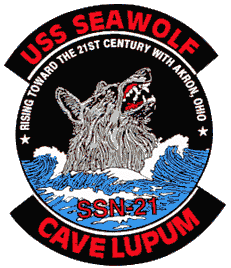
SPECIFICATIONS
|
Builders
|
General
Dynamics Electric Boat Division
|
|
Power
Plant
|
One
S6W
reactor
one shaft at with 52,000 shp with pumpjet propulsor
Improved Performance Machinery Program Phase II one secondary
propulsion submerged motor
|
|
Length
|
353
feet (107.6 meters)
|
|
Draft
|
35
feet (10.67 meters)
|
|
Beam
|
40
feet (12.2 meters)
|
|
Displacement
|
7,460
ton surface displacement
9,137 tons submerged displacement
|
|
Speed
|
Official:
25+ knots (28+ miles per hour, 46.3+ kph)
Actual: 35 knots maximum submerged speed
Actual: 20 knots tactical ["silent"] speed
|
|
Operating
Depth
|
Official:
"greater than 800 feet"
Actual: About 1600 feet
Jane's Fighting Ships: 2000 feet
|
|
Armament
|
eight
660-mm torpedo tubes
50 Tomahawk
cruise missiles or
50 Harpoon
antiship missiles or
50 Mark
48 ADCAP torpedoes or
up to 100 mines
|
|
Crew
|
12
Officers; 121 Enlisted
|
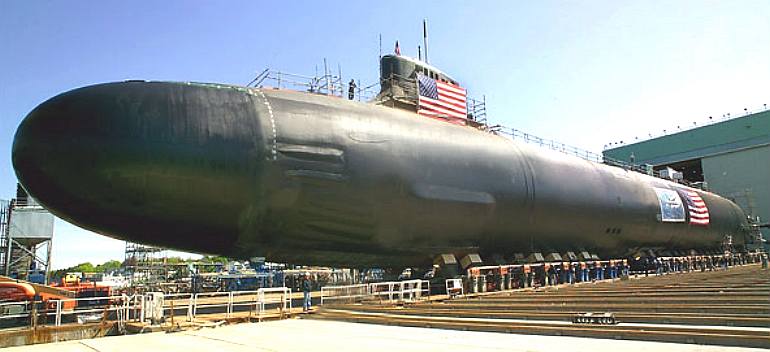
LOBBYING
TO SAVE THE PROGRAM - CASSIDY & ASSOCIATES
In February 1992, Cassidy & Associates landed
General Dynamics, the big defense contractor, who were faced an unexpected
crisis; the cancellation of the Seawolf program.
The Cold War rationale that had driven Pentagon procurement for nearly five decades had suddenly collapsed along with the Soviet Union. General Dynamics built one of the weapons systems explicitly designed to counter a Soviet threat that no longer existed
- the Seawolf attack submarine, whose primary mission was to kill Soviet missile-carrying subs. This high-tech behemoth cost nearly $2 billion per boat; as 1992 began, the first Seawolf was being assembled in Groton, Conn.
The Seawolf was expendable, decided Dick Cheney, then secretary of defense. In his State of the Union address in January 1992, President George H. W. Bush announced that his new budget would include a "rescission" to take back $2.8 billion already appropriated to build the second and third Seawolfs.
For General Dynamics's Electric Boat division, killing the Seawolf would have been fatal. The Seawolf was the only new submarine being built and the only meal ticket for Electric Boat's Connecticut shipyard.
General Dynamics was controlled by the Crown family of Chicago, the heirs of Henry Crown, an 8th-grade dropout who became a financial wizard. He built a $2 billion fortune before he died in 1990. In 1992 his oldest son, Lester, was the patriarch. Lester Crown was active in Jewish and pro-Israeli organizations and had befriended Inouye, one of Israel's staunchest supporters in Congress. In 1992 Inouye was chairman of the Senate defense appropriations subcommittee, a key position to influence the fate of the Seawolf and Electric Boat.
After Bush's speech Crown sought Inouye's advice: How could the Seawolf be saved?
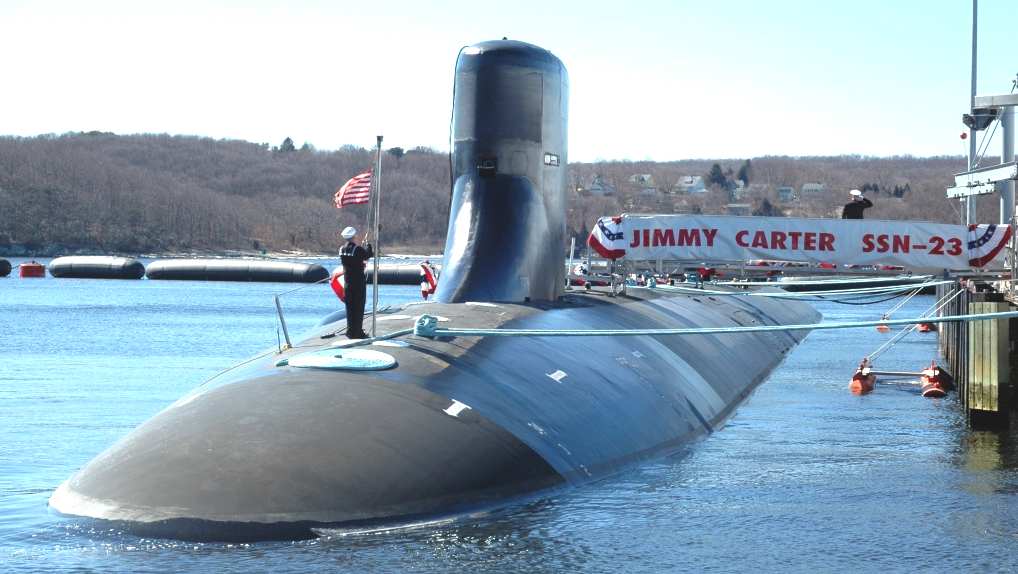
General Dynamics retained Cassidy for a whopping $60,000 a month. Jim Turner, then president of Electric Boat, recalled an early meeting with Bill Anders, the former astronaut who was then General Dynamics's CEO, Cassidy, Inouye and others. "There was a feeling we could go through the legislative process and save the program, but help would be needed to orchestrate it," Turner remembered. "That's where Cassidy & Associates came into it."
Cassidy was thrilled to have this opportunity. He recalled that he and his colleagues found experts in the Navy, among retired Navy officers, and "in the think tanks" who gave them a sense of the arguments for and against the Seawolf. And he recalled the message they settled on to try to sell the idea that the Seawolf program should survive:
It was much too uncertain a time to decide what submarines might be needed in the future, either to counter "an emerging China" with ambitions to dominate the Pacific or "a stronger, nationalistic Russia" that might emerge. Moreover, killing the Seawolf could amount to giving up the capacity to build advanced, nuclear-powered subs, because the "industrial base" for building such ships, once dissolved, could not be easily reconstituted.
"The basic strategy was, you had to change the administration's position," Cassidy said. "You had to really demonstrate that the policy had major flaws." The lobbyists also set out to find the members whose districts would be most affected by canceling the submarine. Electric Boat had followed the standard procedure of putting subcontracts for the Seawolf in many different congressional districts, in more than 30 states. Some votes, Cassidy reckoned, could be won with the policy arguments, some on the basis of the local economic impact.
The Seawolf campaign was Cassidy's first opportunity to exploit the new capabilities he had recently added to the firm. Powell Tate, his then-new public relations arm, would work on building public and media support for the Seawolf in ways that members of Congress would notice. Beckel-Cowan, the newly-acquired "grass-roots" lobbying firm, would stir up pro-Seawolf pressure on members from their home districts.
Glenn Cowan recalled visiting the home towns of Seawolf subcontractors. "We'd try to explain to local car dealers how much money the Seawolf, in effect, had put into their community." Then they'd solicit letters from the car dealers to the local members of Congress, put them in a binder and present the book of letters to the town's members of the House and Senate
- that was grass-roots lobbying.
Powell Tate worked with Electric Boat to create the Submarine Industrial Base Council, which has survived to the present day. It consists of companies that make parts or provide services for the construction of subs. "A lot of these smaller companies, this was about all they did, because nobody else needs the things they make," Jody Powell said years later. "So it was life or death for them too." They helped generate pro-Seawolf publicity in unlikely places.
Powell and his colleagues created teams of local subcontractors, think-tank analysts and retired admirals who could lobby local media outlets. Powell Tate had a studio in its 13th Street offices where it trained these spokesmen in how best to make their case to local television anchors and editorial boards. "We got . . . very good coverage in local markets," Powell said. They also visited editorial boards in small-town papers to promote pro-Seawolf editorials. "Most members of Congress . . . damn well read their local papers every day," he said.
The subcontractors were also effective in Washington, Cassidy said. "We were able to bring well over a hundred subcontractors to town for a number of visits on the Hill. They went from office to office."
It was a presidential election year, which gave Cassidy another target: "The Clinton campaign needed a position to be stronger than the administration in the defense area. So they started criticizing the president's decision and citing the support of admirals and so forth on this, and made it an issue."
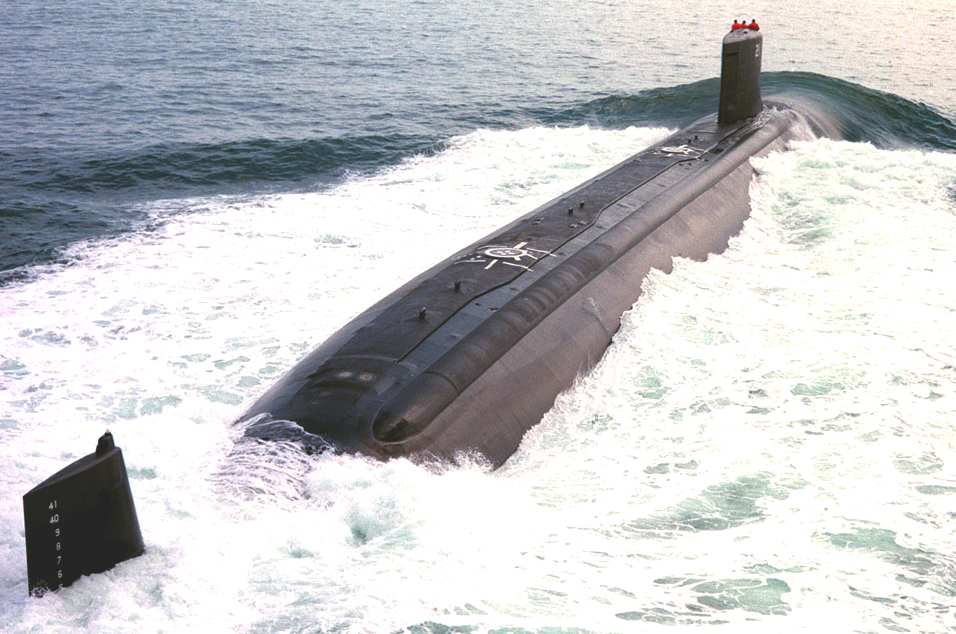
SEAWOLF
SAVED
The key votes came in early May 1992: On the 5th, the Senate rejected Bush's proposed rescission by a vote of 52-46. On the 7th, the House followed suit, 266-150. Cassidy and his colleagues were jubilant; so were the executives of General Dynamics. If we ended the story right here, it would describe a successful, creative lobbying campaign.
But that is too simple. It leaves out the actors who actually made the decision to keep the program alive: members of the House and Senate. The Seawolf campaign illustrates the difficulty of allocating credit or blame for a particular outcome in Washington. Lobbyists don't vote in the House or the Senate; they try to influence the votes of members. But so do congressmen and senators, who have many advantages over lobbyists when they play the same game.
Cassidy and General Dynamics celebrated those votes for the Seawolf, but not as euphorically as did the two Democratic senators from Connecticut, Chris Dodd and Joseph I. Lieberman, and Rep. Sam Gejdenson, also a Democrat, who represented the district where the Seawolf was built. For Cassidy's lobbyists, rescuing the Seawolf was a job; for Dodd and Gejdenson, both candidates for reelection in 1992, it was potentially a matter of survival.
Electric Boat was in Dodd's blood. At the age of 10, his father, Thomas Dodd, then the congressman from eastern Connecticut and later a senator himself, took him to the launching of the USS Nautilus, America's first nuclear submarine. Twenty-six years later, in 1980, when he was the congressman, Chris Dodd helped settle a seven-month strike by Electric Boat's draftsmen.
When he learned on Jan. 29, 1992, that President Bush planned to use his State of the Union speech that very night to propose eliminating the Seawolf program, it was "a real shock," Dodd said in an interview. "Reversing a presidential decision is pretty difficult on these things." Dodd and his staff, led by Robert Gillcash, who had just joined the senator after a stint as a professor of national security at the Air Force Academy, quickly organized a campaign in the Senate at least as elaborate as Cassidy & Associates's effort on the outside.
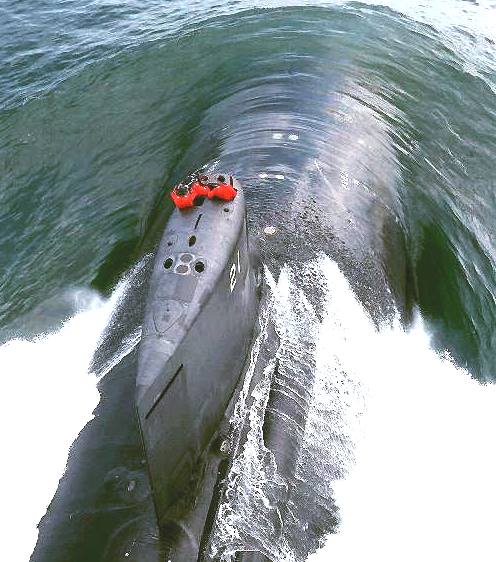
They framed the issue as protecting America's capacity to build nuclear submarines. He said he told his colleagues, one by one, not to worry about the political impact of killing the Seawolf on him personally -- a classic pose on Capitol Hill, rarely taken entirely seriously -- but to focus on the national security issue, which was maintaining the "industrial base" needed to produce subs in the future.
Yes, the Seawolf's original mission had been overtaken by the collapse of Soviet power, but Dodd argued that subs would remain the key to U.S. naval superiority. If Electric Boat died and its talented workforce melted away, reconstituting the ability to manufacture nuclear-powered subs would be difficult and extremely expensive. Just build two more Seawolfs, he argued, to keep the company and its workforce intact, then move on to a new, cheaper model suitable to the new strategic environment.
Dodd, popular among his colleagues, visited scores of senators to try to persuade them that it would cost more to cancel the Seawolf than to build two more ships, partly because of penalty clauses in existing contracts for the sub. Retaining Electric Boat's unique capabilities was worth a few billion more, he argued. "It took ten years to train a welder" at Electric Boat, Dodd said, and if the yard closed, those welders would "disappear into the civilian economy."
"The bottom line is, you have to continue to build," DeMars testified. "A hiatus in submarine construction would surely put the final nail in the coffin of the U.S. submarine-construction capability after 90 years of being the preeminent builder in the world." It was crucial, he said, to preserve "the industrial base" -- Dodd's and Cassidy's favored argument. Now a senior admiral was defying his bosses to support it.
So how important was the lobbying campaign to the final outcome? The question is unanswerable: the lobbying happened, it contributed to a political environment favorable to the Seawolf, and there's no way to know what might have happened without it.
Inouye is quoted as saying: "We're always trying to help each other shore up our constituencies'
economies." Supporting the Seawolf was easy once he concluded it was "in the national interest."
LINKS
& REFERENCE
http://www.naval-technology.com/projects/seawolf/
http://www.tonyrogers.com/weapons/seawolf.htm
http://blog.washingtonpost.com/citizen-k-street/chapters/chapter_14/
http://en.wikipedia.org/wiki/Seawolf-class_submarine
Submarine
Warfare
List
of sunken nuclear submarines
Battle
Pirates
http://www.military-today.com/navy/seawolf_class.htm
http://battlepirates.wikia.com/wiki/Hulls
SUBMARINE
INDEX
Alvin
DSV - Woods Hole Oceanographic Institution
HMS
Astute 1st of Class
BAE Systems
HMS
Vanguard- Trident
INS
Sindhurakshak - explosion
& sinking
Lusitania
- Torpedo
attack
Nuclear
submarines lost
at sea
Predator
- Covert submarine hunter/killer
Seawolf
- Autonomous wolf pack deployment of Predator mini-subs
Torpedoes
- UUV anti submarine weapons
U
Boats -
U20
- Kapitan Leutnant Walther Schwieger
USS
Bluefish WWI submarine
USS
Bluefish - Nuclear submarine
USS
Flying Fish
USS
Jimmy Carter - Seawolf class fast
attack nuclear submarine
USS
Nautilus - 1st nuclear submarine
& subsea north pole passage
USS
Scorpion -
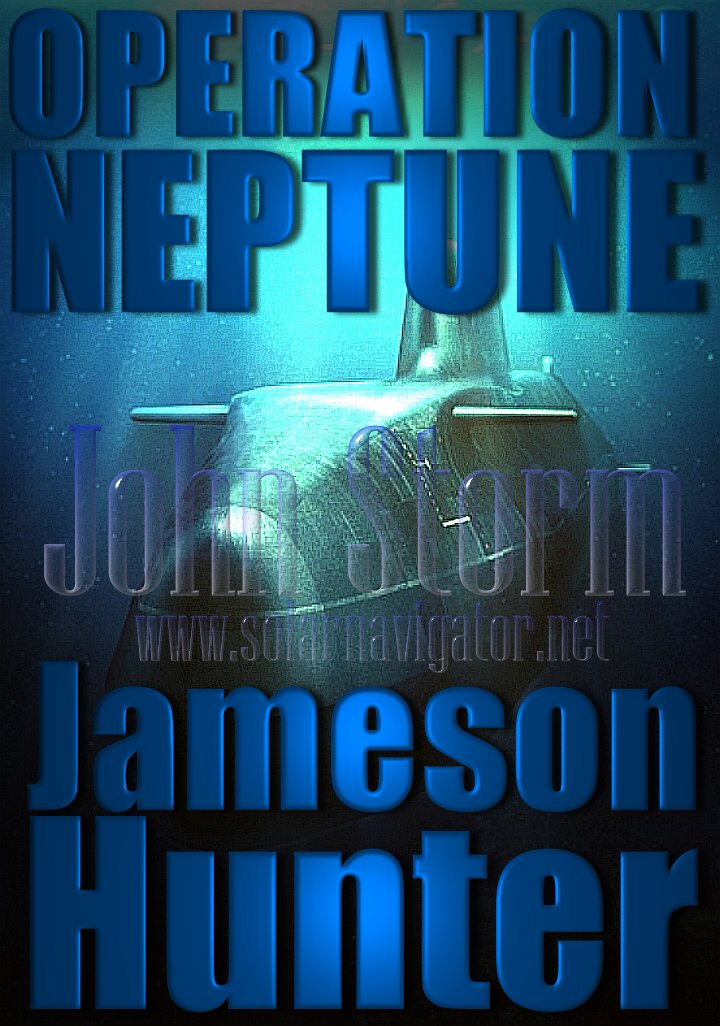
FICTION
Operation
Neptune - An
advanced nuclear submarine is hijacked by environmental extremists intent on
stopping pollution from the burning of fossil fuels. The extremists torpedo a
number of oil wells as part of a campaign to cause energy chaos, with bigger
plans to come. If you enjoyed Under Siege or
The Hunt for Red
October, this is a
must for you.
|







